Content:
Russian breeders obtained the Ogonyok watermelon by crossing the Sugar watermelon variety with an Asian hybrid. They took him out to the Institute of Vegetable Growing near Kharkov. The berries are grown in the southern, eastern regions of the Russian Federation without film. In Siberia, in the Urals, Ogonyok bears fruit in greenhouse conditions. It is distinguished by its sweet taste, aroma and unpretentious care.
Description of the variety
The stems of the plant are thin, with many branches. Green ovoid leaves are located on long petioles, alternately growing on lashes. The flowers are yellow with a boat-shaped bract. The root penetrates the ground to a depth of one meter.
Characteristic of the Fire:
- ripening of berries - 70-85 days;
- the fruit is a multi-seeded berry;
- spherical shape;
- color is dark green;
- weight 1.5-3 kg;
- the pulp is juicy, bright red, granular;
- the taste is sweet;
- the peel is thin;
- seeds are black, small.
Due to the early ripening period, Ogonyok watermelon can be enjoyed earlier than other varieties.
Advantages of the Ogonyok hybrid
Main advantages:
- high yield: subject to the rules of cultivation - 160 - 360 c / ha, from one square from 3 to 6 kg of berries;
- early ripening;
- adapts to any weather conditions;
- grown both in open soil and in a greenhouse;
- excellent taste indicators;
- the hybrid is unpretentious in care;
- increased resistance to diseases: fusarium, anthracnose.
Despite its many advantages, the Spark is prone to cracking during transportation; the watermelon has a thin skin. The berries are not stored for a long time, they must be consumed within a week after harvest.
For the Moscow region and the Leningrad region, the cultivation of Ogonyok is possible in greenhouse conditions, you will first have to prepare seedlings. Sowing in mid-April, after a month the seedlings should be transplanted into a greenhouse.
How to grow a watermelon Spark
It is not recommended to plant a melon crop after plants of the pumpkin and nightshade family for about 5 years. The predecessors can be wheat, legumes, perennial grasses.
The soil
In the southern and eastern regions, watermelons can be planted without film. The best time is from the end of April to 10 May. Light, permeable soil is suitable for melons. In unheated soil, the shoots will not sprout, the temperature should be at least 15 -17 degrees. The plant bears fruit well on sandy, sandy loam soils, acidity 5.8 - 6.8 pH.
It is necessary to fertilize the site in the fall: apply 5-6 kg, 60-70 g of mineral additives per square meter of humus. Add a bucket of sand to clay soil. In the spring, 3 days before planting, scatter 1 kg of manure, a spoonful of ash, a spoonful of ammophoska (per 1 square meter) on the beds, mix well with the ground.
Attention! Fresh manure must not be used.
Seed preparation
Watermelon seeds Ogonyok are sold everywhere. When buying, be sure to pay attention to the expiration dates, when opening the package, review the seed material, remove damaged seeds. You can collect seeds in the fall on your own after eating a juicy treat.
For 25 minutes, immerse the seed in a weak solution of manganese, remove, rinse. Place in a gauze cloth, pre-wet. The seeds will hatch in 3 days, it is time to plant them.
Landing:
- pour 1.5 liters of water into each prepared hole;
- wait until the water is absorbed;
- loosen the earth, free it from dirt;
- put two seeds in each hole;
- sowing scheme 60 cm by 90 cm;
- sprinkle with soil, compact it.
Do not water, otherwise a hard crust will form on the surface, the seed will not be able to break through. The added water is enough for the seeds to sprout.
Growing seedlings
Seedling is used in areas with a cold climate and where you need to get an early harvest. Fruits are harvested 20 days earlier than when sowing seeds. Watermelon seedlings are hard to pick, so you need to use individual containers.
Planting process:
- prepare an earthen mixture: peat, turf soil, humus (1: 3: 1), for 1 kg of substrate 2 tablespoons of ash, a small spoonful of superphosphate;
- deepen two seeds into a glass by 3 cm, a weak sprout from two germinated will have to be removed;
- water;
- set the temperature to 28 degrees. The sprouts will break through in 7-8 days;
- lower the temperature to 19 degrees;
- after three days, raise to 24 degrees, keep this mode for 25 days.
10 days after sowing, feed the seedlings with mullein solution (1:10). After 16 days, add potassium (25 g), superphosphate (40 g), ammonium sulfate (20 g) - proportions to a bucket of water. Seedlings can be kept on a sunny windowsill or insulated balcony. Seedlings are transplanted into the garden 35 days after sowing.
Before planting, the seedlings are hardened, accustoming them to a new habitat. The containers are transferred outside every day: 1-3 days for two hours, 4-5 days for 3 hours, 6-7 days - for 5 hours, 8-9 days - all day outdoors.
It is better to plant young growth in the morning. The planting interval is 60 cm by 110 cm. Pre-fertilize the soil in the holes with compost. Spill water over each hole. Carefully remove each plant from the container, deepen to the first leaves, squeeze the soil. Fill the holes with dry earth or sand, cover with a layer of humus. If the nights are cold, cover the seedlings with film material, open when it gets warmer.
Interesting! The very powerful long roots of the watermelon extract moisture from the deep layers of the soil.
Caring for watermelons in the beds
In order for the young to take root, it must be protected from the sun's rays. Water the seedlings depending on the weather: on hot days - after 3 days, on ordinary days - after 7 days.
In the Moscow region, it takes up to 1.5 liters of water for each plant. During the formation of berries, watering must be stopped. Young fruits will need more sunlight, they will calmly survive dry days.
At the end of June, the plants bloom, if the weather is cloudy, pollination may not occur. You should pollinate the flowers yourself - gently touch the female inflorescences with male flowers. The manipulations are repeated until the ovary is formed.
After 12 days, it's time to do the first feeding: dilute 20 g of superphosphate, potassium 15 g, ammonium nitrate 5 g in 5 liters of water. Weak buds must be removed, leaving 4 healthy flowers. Every 12-14 days, water the melons with nettle infusion (pour water over the grass and leave for 6 days). Apply top dressing at the root. Do not change the proportions: with an excess of nitrogen, the watermelon will grow small.
In cold weather, watermelons can hurt, rot, die. Good development of berries is possible at a temperature of 26-30 degrees. In the northern regions, this regime is maintained in greenhouses.
Do not forget to loosen the beds, weed. Place a board or foil under the fruit so that the side does not rot.
Attention! An anthill next to the melons can spoil the crop, it must be removed.
When the fruit is infected with a fungal disease, use a solution of Fentiuram, Fundazol (0.1%). Previously, the site can be treated with a solution of potassium permanganate, copper chloride, and crushed chalk. Decis will help against aphids and wireworms.
Greenhouse care
The process of watering and fertilizing is the same as for open ground. The disadvantage of greenhouse cultivation is the lack of bees to pollinate flowers. In a greenhouse, plants should be manually pollinated. Apply stamens of male flowers to the pistils of female flowers.
Note! You need to pollinate watermelons at a temperature of 20-22 degrees.
From time to time, the greenhouse should be opened to harden the plants and ventilate. In small greenhouses, the trellis method of tying lashes is suitable. The lash should be pinched after the fourth ovary; you should not leave more than 5 pieces on one plant.
Important! To prevent watermelons from being one-sided and ripening evenly, they need to be turned periodically.
Harvesting
The melon crop, planted in April, is harvested at the end of July, the May planting is the harvest in August. Ripe berries have a dark green color, a dried stalk, and a yellow barrel. You need to pluck the watermelon carefully, without damaging the whip. Ripe berries should be transported carefully, the thin peel may crack. This variety is not intended for long-term storage, but fruits will stay in a cool basement for up to 30 days.
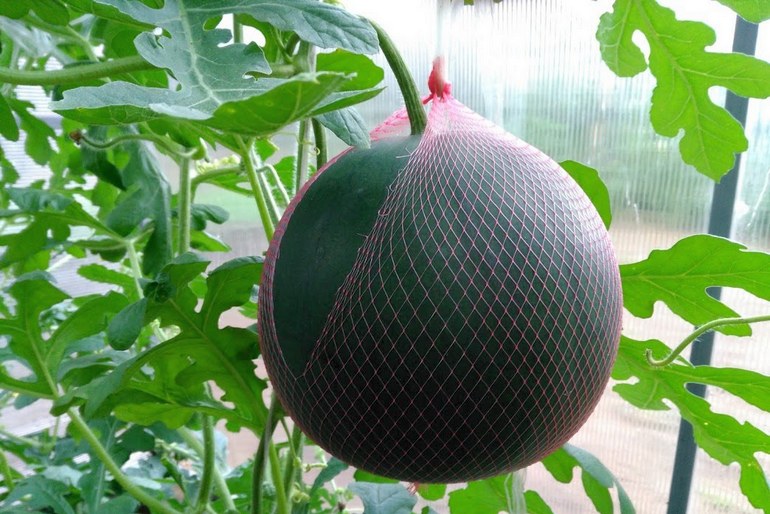
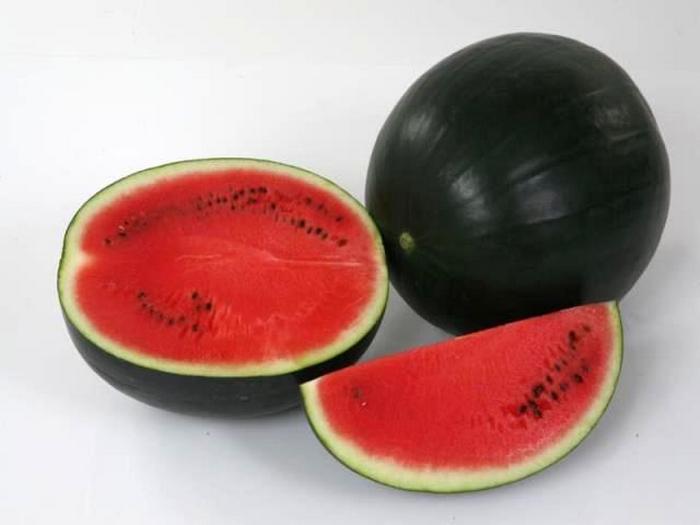
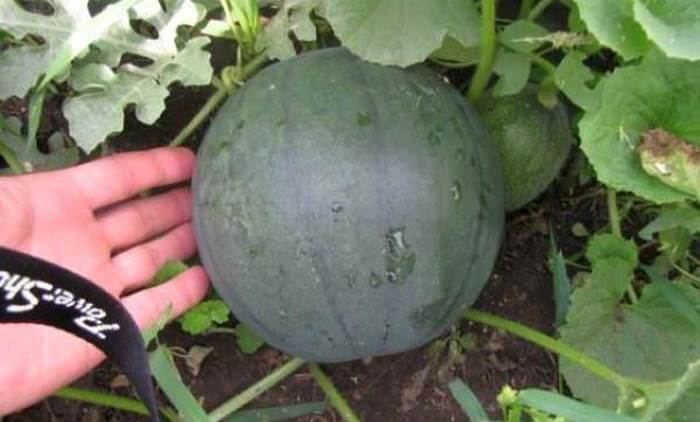
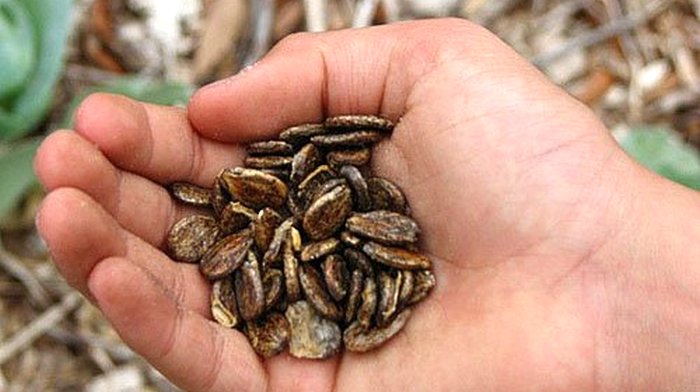
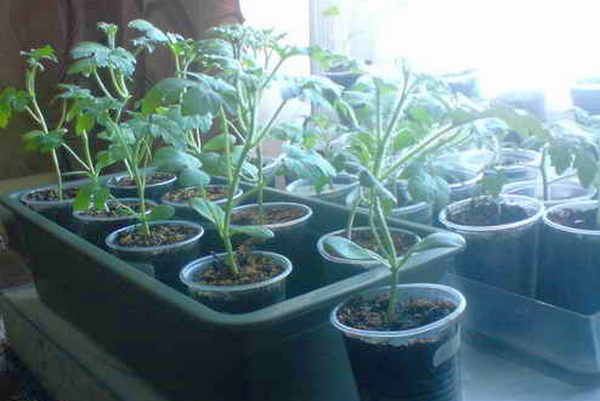

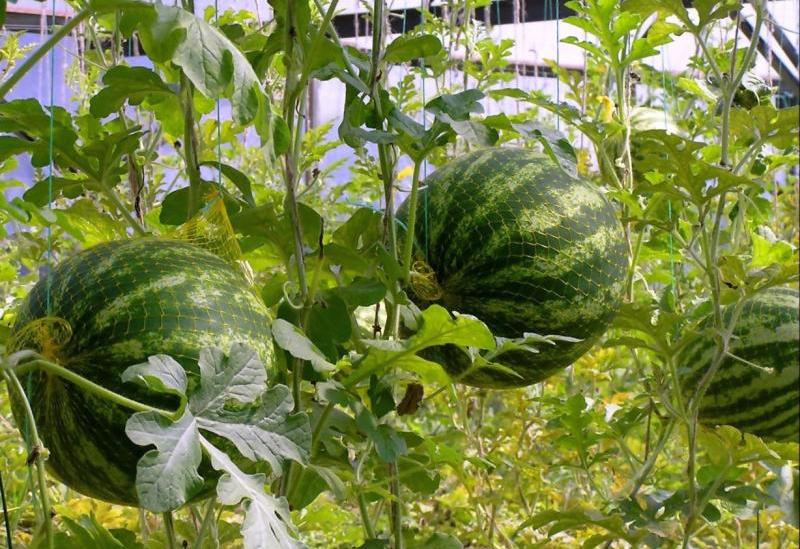
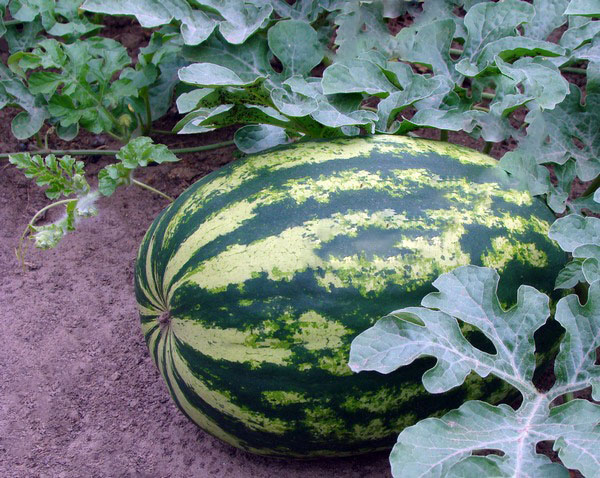
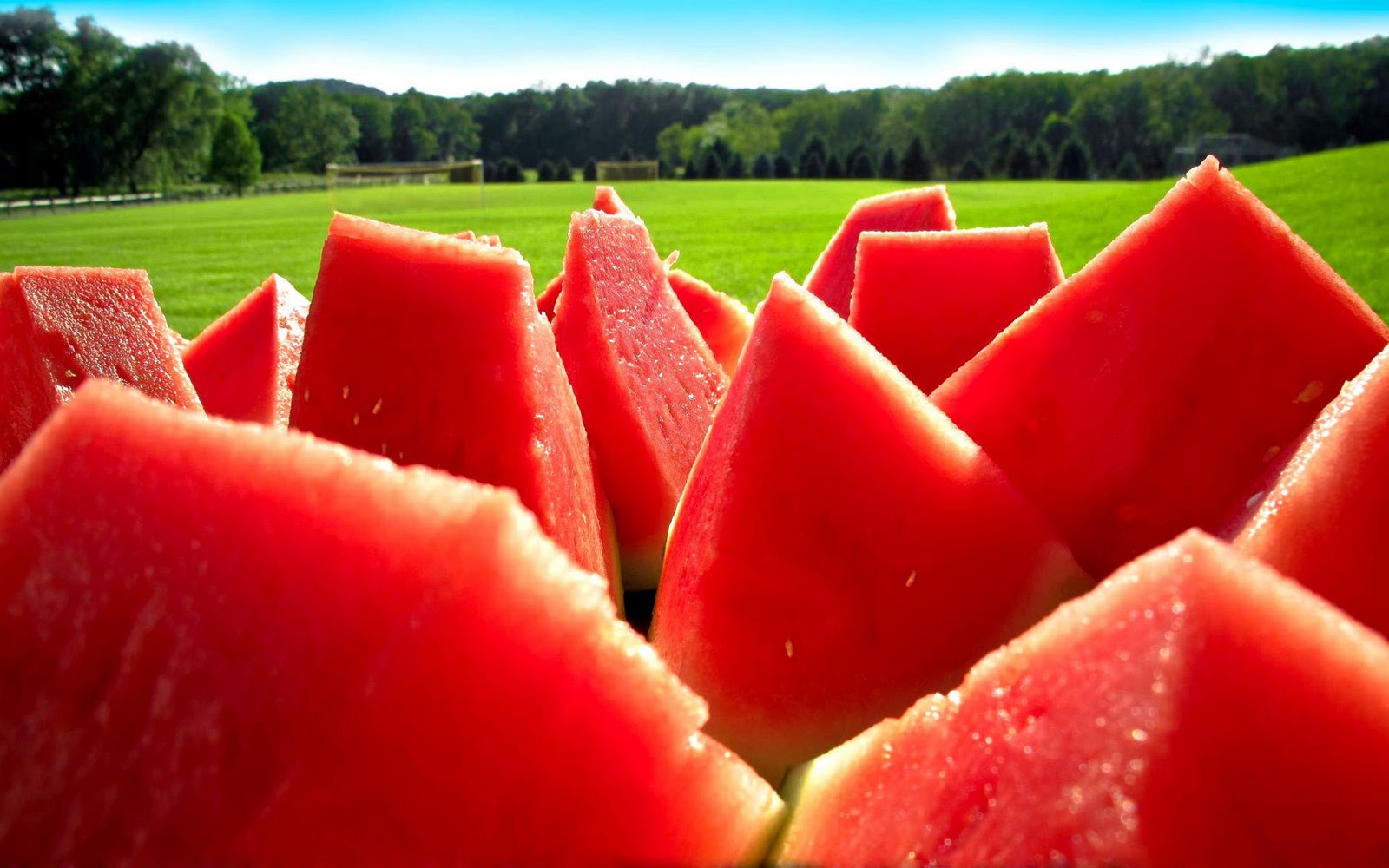
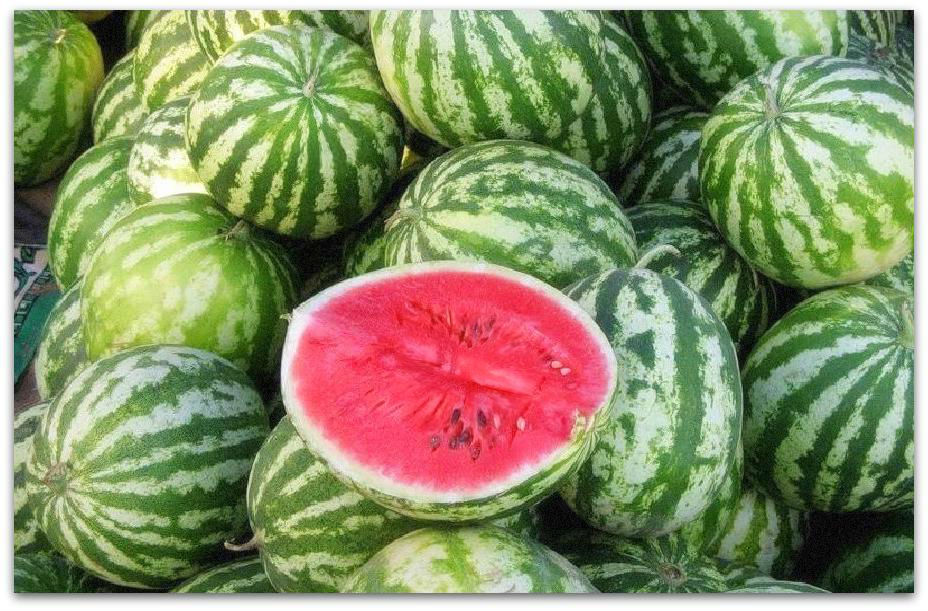

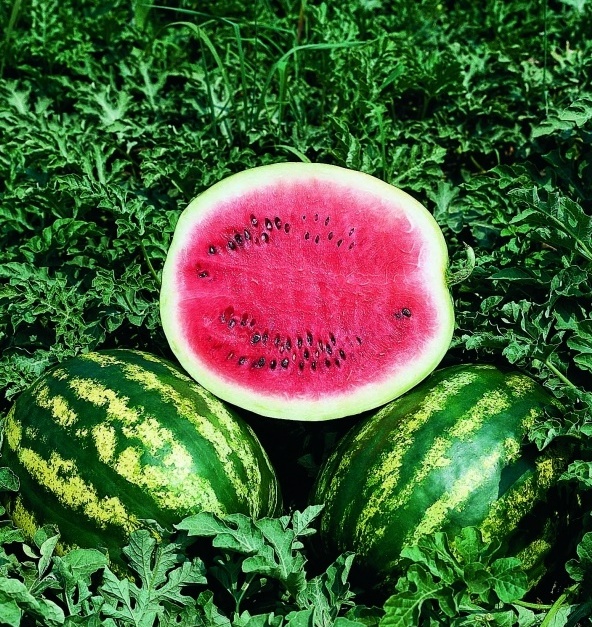








Almost called a hybrid? He did not deserve it.